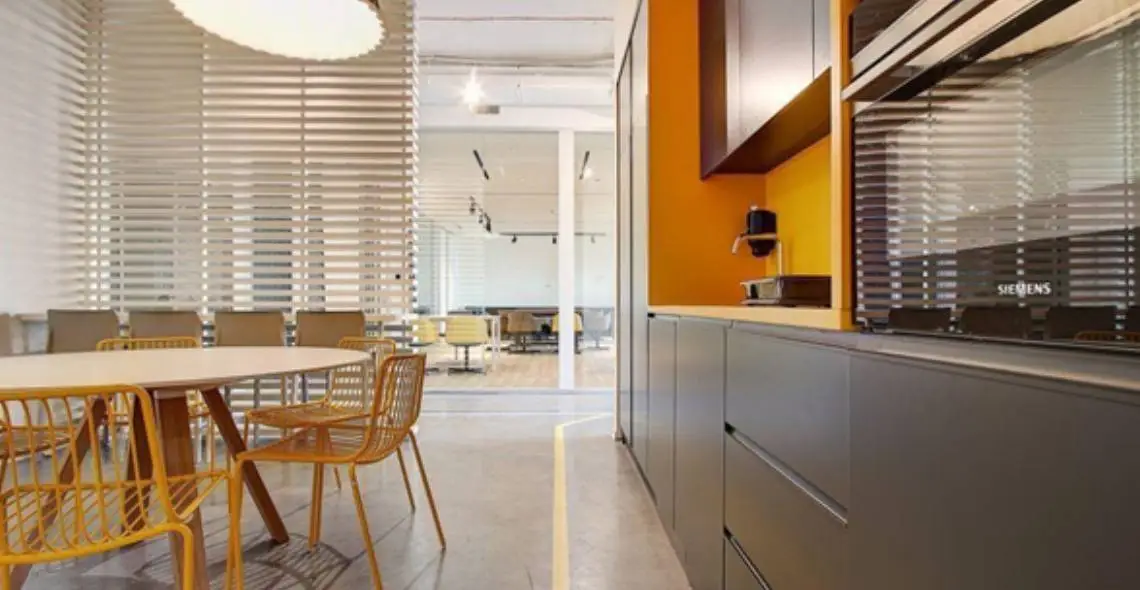A market snapshot
May 2021. Many of Malta’s Commercial Real Estate (CRE) landlords recently navigated a series of complex challenges including concessions, rent waivers and early terminations of leases resulting from the ‘black swan’ event that has defined our day-to-day behaviour for the last 18 months.
The implications on Real Estate capital values, cap rates and returns only added to such complexity.
The impact has been felt across the whole of the CRE spectrum, – and whilst there were lots of losers (even some ‘casualties’ so to speak) there is also an often-overlooked sector that has come out on top.
A trade-off was inevitable. Restrictions for safeguarding the health of our nationals caused the hospitality, catering, and retail sectors to take a substantial hit – and this was felt by lots of CRE Landlords in the related sectors.
Corporate spaces felt this too – yet to a lesser degree – as work from home practices became the de facto knee-jerk reaction for companies who had never even envisioned it as part of their operations model.
Meanwhile, industrial space, together with storage and distribution have enjoyed the spoils of war. Demand has skyrocketed in this sector.
Time to smell the coffee
We have blamed the infamous virus for restaurants that have closed, office leases that have been terminated prematurely as well as for those extra pounds that we have affectionately labelled (me included) – Covid Belly.
That being said – Are we possibly being naive about what is really shaping our industries and the related Commercial Real Estate sub-sectors?
Are we being true to ourselves in blaming it on the ‘Vid when most sectors have been completely ignoring underlying forces that have been shaping the market for the last 10 years?
Could it be that the pandemic simply highlighted, and quite definitely turned up the volume on what changes were and are necessary in Malta’s Commercial Real Estate industry?
The reality is that the CRE landscape was already facing disruption resulting from various technological advancements, and it seems as though those who do not pick up the pace will simply get left behind.
A surprising and a welcome initiative.
Compared to the Private sector, governments are notoriously slow in implementing change. And understandably so. They are constantly under public scrutiny, and face strong resistance from the opposition. This effectively slows them down as they have to be sure that every step they take is calculated or they may risk a public onslaught if they miss their mark.
In fact, initiative in technological adoption and early alignment with emerging trends are hardly two qualities that one would naturally associate with governments.
Yet this year – in Malta – we witnessed just that.
A press release by the Office of the Principal Permanent Secretary Mr Mario Cutajar was published on the 13th January earlier this year.
It revolved around the inauguration of the first remote workspaces in the Public service, and quoted him saying that:
“The studies we carried out clearly show that staff desire to continue working remotely, but not necessarily from home because they still prefer to leave home. By the end of this year, we will have about 15 remote workspaces functioning.”
Hub & Spoke by the Public Service
Curious about what I had just read, and pleasantly surprised – I thought to myself – “Is it possible that the government has taken an initiative and embraced a trend that the private sector has been sluggish to respond to for the past 10 years”?
I felt that this may serve as a wake-up call to workspace providers and for the Private sector to explore some less traditional approaches to their workspace offerings and requirements.
Remote spaces
The project, launched by the Public Service and branded as Remote Spaces capitalises on the emerging trend of a hub-and-spoke model that places decentralisation and flexibility as two of its core features – all the while embracing technologies and layouts to facilitate this model.
The service – and this is a key word here, as ‘space’ comes somewhat short as a definition – is only available for public workers, and effectively allows them to make use of any one of the remote working hubs being made available to them.
The breakthrough with using this Hub and Spoke model is that it allows for a more agreeable work-life balance, whereby employees may work from wherever they want, not necessarily from their head office, or home – thus giving them the much-needed flexibility that many workers would benefit from.
In fact, data from countless sources shows that this model offers numerous benefits, amongst which are motivation, improved commuting experiences, and increases in productivity. In other words, it’s a no brainer. And if the Public sector – not usually referred to as the early bird – is adopting this trend, what is holding up the private sector from doing so?
Transitional lease agreements
Shedding light on the familiar corporate CRE silo – since many of us work in offices – will serve as a practical example for the items I will briefly discuss below.
So far, Corporate CRE Landlords have gotten comfortable with the traditional ‘Rent and forget lease’ model to earn revenue from their spaces.
This usually involves their signing of a lease for say 2,3,5 or even more years, and renew leases as per tenant requirements.
In such traditional arrangements, landlords are simply supplying a space that meets their tenant’s demands. But there isn’t much else to it.
At the most rudimentary level, the discussion between both parties usually revolves around three key items, namely:
- The size of the space required
- The duration of the lease
- The cost of the rented space.
A typical lease scenario
A typical scenario would involve a Commercial Real Estate Broker, like myself, who would introduce both parties and negotiate a deal on their behalf.
In the more traditional situations, and once the heads of terms are agreed upon, the tenant would take over the space and there would be hardly any further involvement from the landlord, apart from when things may go wrong, or if any maintenance may be required.
Such agreements are rarely ever done for periods of less than 2 years, with 3 to 5 years being more like the norm.
That model – whilst still the most widely used across all sectors of the CRE sector – is starting to show some signs of age especially for SME’s that operate in fast moving industries.
Evolving demand personas
Let us take a practical scenario to highlight how some of today’s demand has evolved in a way that makes such traditional leases less than adequate.
We may take a young tech company that is presently made up of five employees as an example. They are looking for a space, and I am recommended as somebody who will help them find a suitable space with no time wasted ( – shameless plug 🙂 ).
They intend to scale up to around 10 people in the next 6 months. Possibly up to 20 within 12 months. And they are running lean, so whilst a necessary activity, even the process of finding a suitable office may be a strain on their time available to run their operation.
How much space will do? Should they rent a space for 10, or 20 people when they only need space for 5 in the first few months?
A space for 20 will cost more than one for a team of 5 and if they do not need the space right away, it would just be money down the drain.
Not that a spacious office wouldn’t be appreciated, but that budget could be put to better use in recruitment or allocated to business development.
Apart from organising Furniture, internet connection, cleaning, maintenance support, and an insurance provider, the company needs a boardroom for their quarterly investor meetings, as well as soundproof booths for video/voice-calls, and an open space for their operations team.
They really do not have time to coordinate all these loose ends and get in touch with all those contractors, whilst also running their business.
Oh and one more thing. They want to be operating in two weeks’ time – latest, but by next Wednesday it would be even better.
A traditional ‘Rent and forget’ lease just won’t do here.
Enter, Space as a Service.
About this content
This piece is the first in a series of CRE articles that will be compiled exclusively for the Investment Forum. Throughout the series I will discuss prevalent global and national trends in the CRE sector.
Check out our blog for upcoming content about some of CRE’s trending topics such as Space as a Service, Collaborative lease models, flex space, and commercial real estate investment in Malta.
The content will be aimed at both demand and supply sides of the market, as well as market players and others who may be interested in becoming part of this evolving and exciting industry.
Etienne Licari is a CRE broker operating in Malta’s real estate market.
He is passionate about CRE and has a ‘soft spot’ for Offices for Rent in Malta as well as Commercial Real Estate Investment opportunities across the islands.
At time of writing he holds over a decade of experience working in the CRE sector with Dhalia Real Estate – one of the longest established Real Estate Firms on the island.




